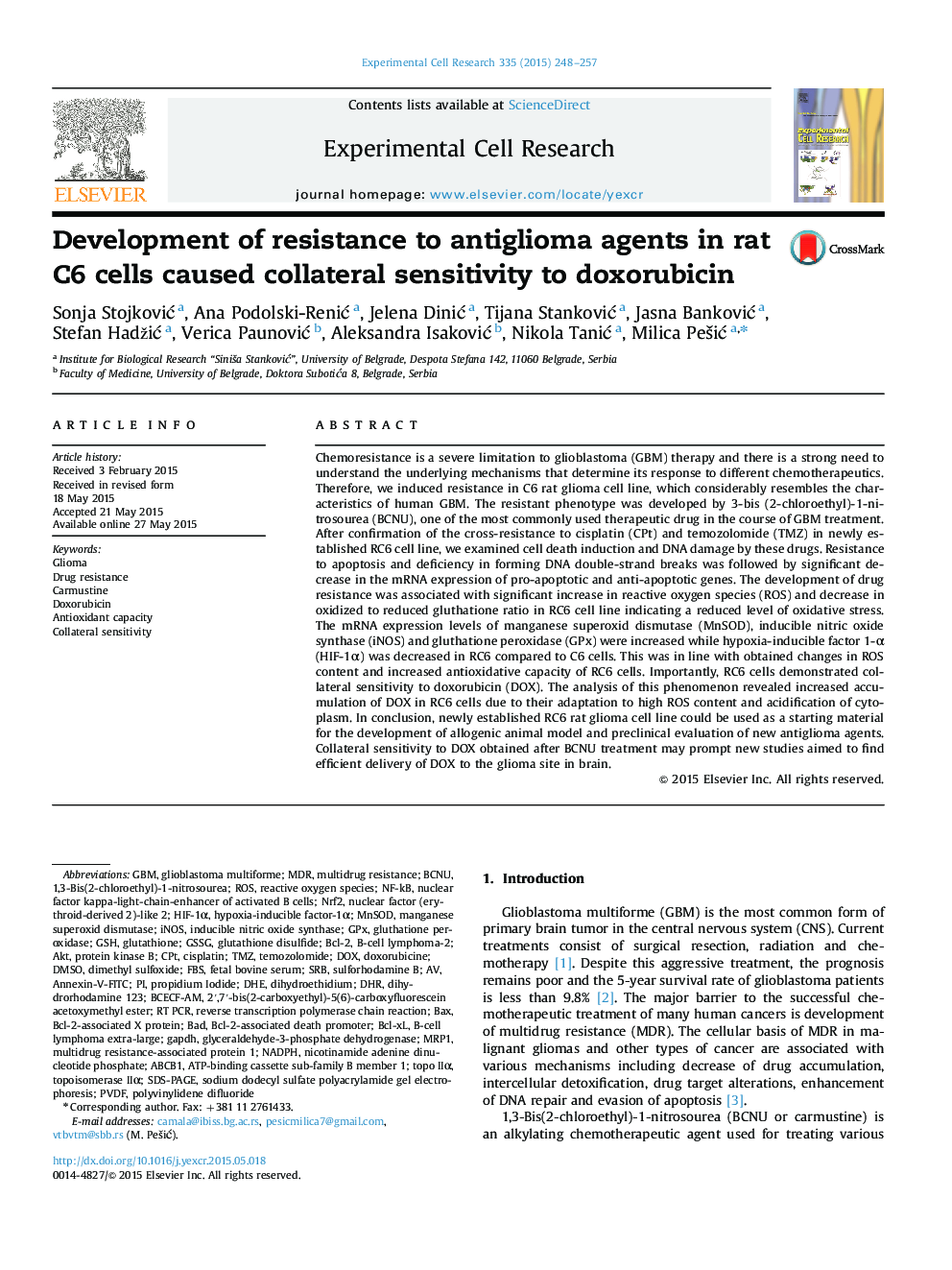| کد مقاله | کد نشریه | سال انتشار | مقاله انگلیسی | نسخه تمام متن |
|---|---|---|---|---|
| 2130216 | 1086538 | 2015 | 10 صفحه PDF | دانلود رایگان |

• Continuous carmustine (BCNU) treatment induced resistance in C6 rat glioma cells.
• Obtained resistant RC6 cells developed resistance to three DNA damagingagents.
• RC6 cells showed collateral sensitivity to doxorubicin.
• The main cause of resistance in RC6 cells is increased antioxidative capacity.
• C6/RC6 model may serve for studying different antiglioma therapeutic approaches.
Chemoresistance is a severe limitation to glioblastoma (GBM) therapy and there is a strong need to understand the underlying mechanisms that determine its response to different chemotherapeutics. Therefore, we induced resistance in C6 rat glioma cell line, which considerably resembles the characteristics of human GBM. The resistant phenotype was developed by 3-bis (2-chloroethyl)-1-nitrosourea (BCNU), one of the most commonly used therapeutic drug in the course of GBM treatment. After confirmation of the cross-resistance to cisplatin (CPt) and temozolomide (TMZ) in newly established RC6 cell line, we examined cell death induction and DNA damage by these drugs. Resistance to apoptosis and deficiency in forming DNA double-strand breaks was followed by significant decrease in the mRNA expression of pro-apoptotic and anti-apoptotic genes. The development of drug resistance was associated with significant increase in reactive oxygen species (ROS) and decrease in oxidized to reduced gluthatione ratio in RC6 cell line indicating a reduced level of oxidative stress. The mRNA expression levels of manganese superoxid dismutase (MnSOD), inducible nitric oxide synthase (iNOS) and gluthatione peroxidase (GPx) were increased while hypoxia-inducible factor 1-α (HIF-1α) was decreased in RC6 compared to C6 cells. This was in line with obtained changes in ROS content and increased antioxidative capacity of RC6 cells. Importantly, RC6 cells demonstrated collateral sensitivity to doxorubicin (DOX). The analysis of this phenomenon revealed increased accumulation of DOX in RC6 cells due to their adaptation to high ROS content and acidification of cytoplasm. In conclusion, newly established RC6 rat glioma cell line could be used as a starting material for the development of allogenic animal model and preclinical evaluation of new antiglioma agents. Collateral sensitivity to DOX obtained after BCNU treatment may prompt new studies aimed to find efficient delivery of DOX to the glioma site in brain.
Figure optionsDownload high-quality image (258 K)Download as PowerPoint slide
Journal: Experimental Cell Research - Volume 335, Issue 2, 15 July 2015, Pages 248–257